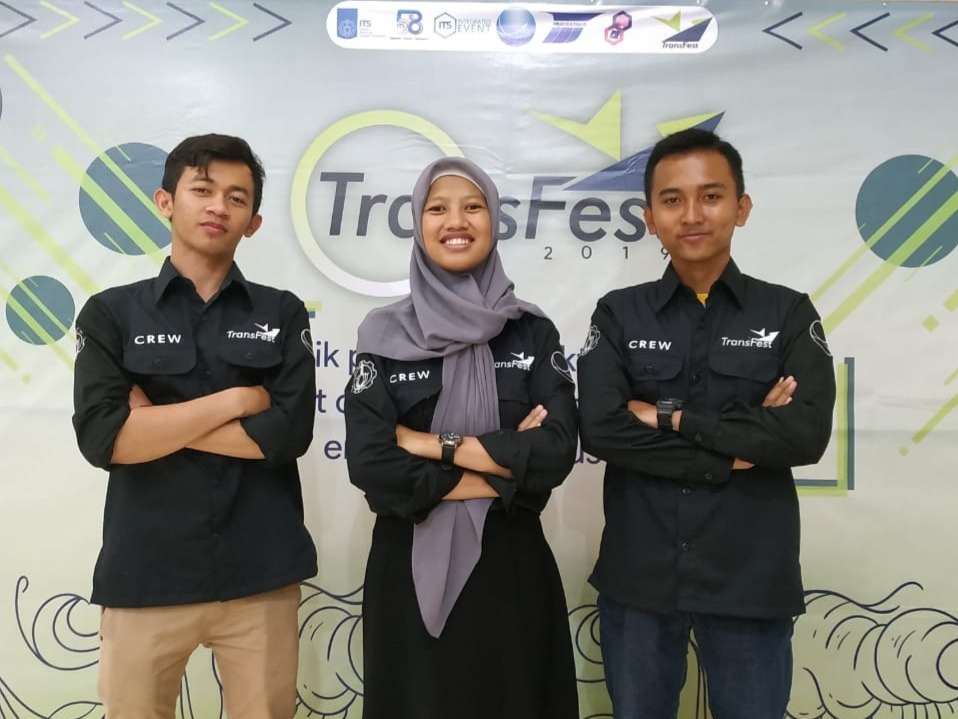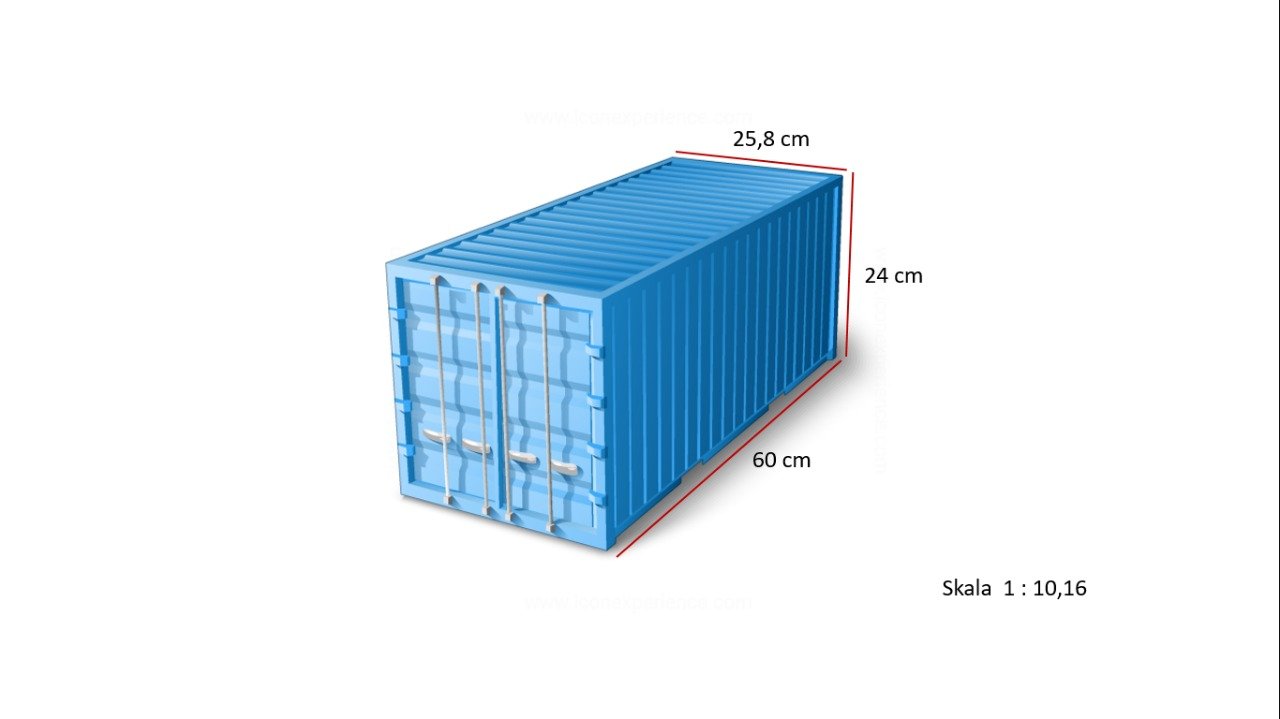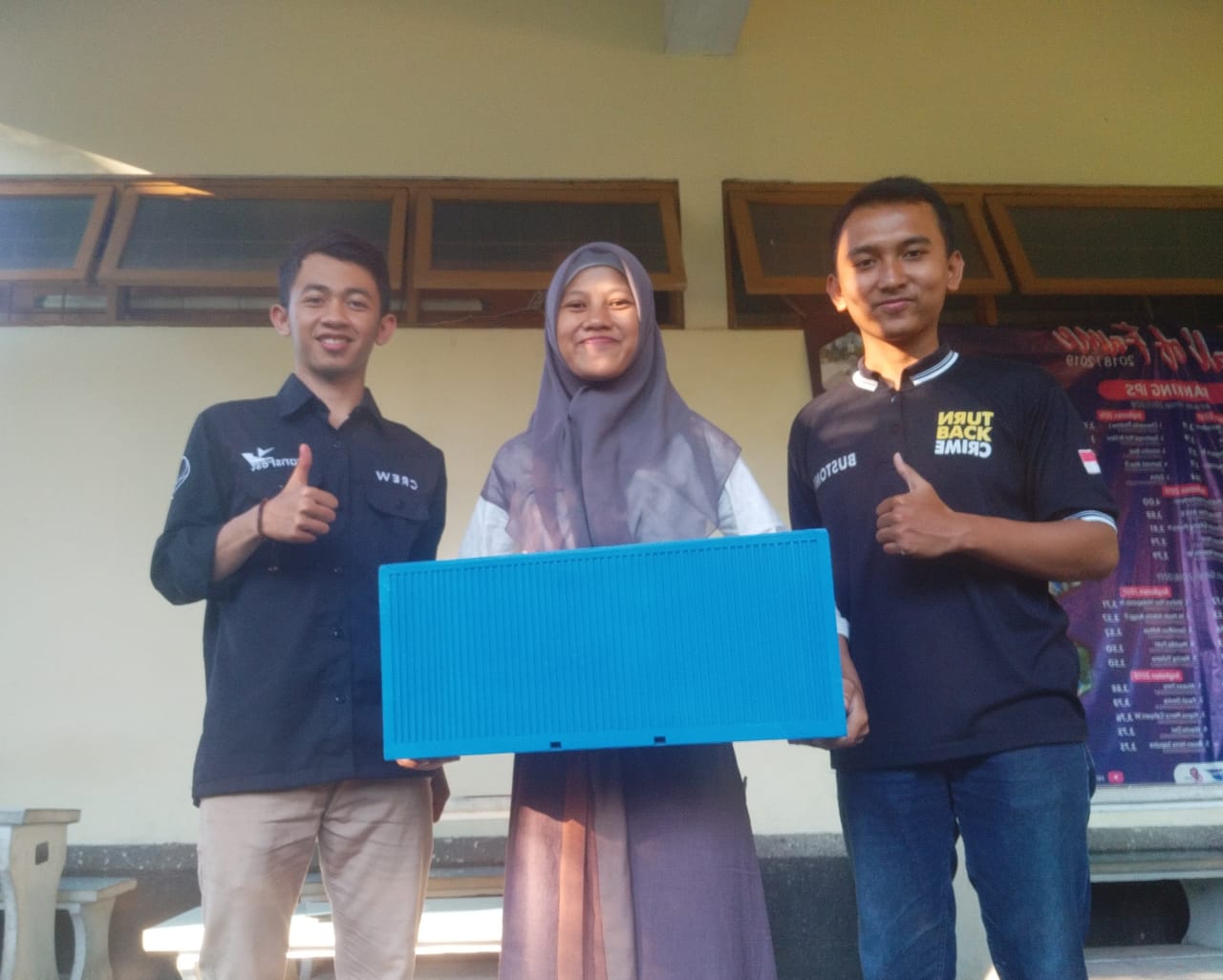ITS Student Design CGMS, Container Weighing Problem Solutions
 Wahyu Nur Hidayatun Nisa (center) with her team Agung Purwandoko (left) and Bustomi (right)
Wahyu Nur Hidayatun Nisa (center) with her team Agung Purwandoko (left) and Bustomi (right)
ITS Campus, ITS News – In order to help advance the Indonesian maritime industry, Institut Teknologi Sepuluh Nopember (ITS) created innovative works in the maritime field again. Focusing on ship loading calculation problems, three ITS students successfully made a weigher innovation in the form of Container Gross Mass Sensor (CGMS) to obtain the heavy data of valid container contents.
They are Wahyu Nur Hidayatun Nisa, Agung Purwandoko and Bustomi who successfully created the automatic load counting tool. Wahyu as the head of the team said the concept of CGMS combines containers and weighers. The innovations arise due to the rise of the case of heavy data inconsistency in containers listed in the manifest with the actual weight. “Errors like this can affect the stability of the vessel that could result in accidents,” she said.
According to Wahyu, the results of the scale of the container itself can be caused by two things, the process of weighing by the port or cheating by the owner of the goods. Currently, the container weighing process still uses a weighbridge so that the results tend to be inaccurate. “Because the measurable is not just the charge in the container but includes the weight of trucks and other loads,” said this student from Blitar.
 Container Gross Mass Sensor (CGMS) Visualization
Container Gross Mass Sensor (CGMS) Visualization
The second cause, said Wahyu, is the cheating done by the owner of the goods. The weight of goods in the container has a heavier weight than the weight reported. It is intended so that the owner pays the shipping cost to be cheaper.
These problems can also be solved by using this CGMS to obtain net weight data of valid container contents. From the data, it can be used by the port as a reference to the container’s shipping and total cargo calculation. “So it can be possible to avoid overloaded cases on the ship,” she said.
In addition, Wahyu explained, the advantage of using CGMS can also reduce losses due to the theft of the charge by the jumping squirrel which is the scroungers stealing cargo from the top vehicles (such as trucks, buses) that are running. “The jumping squirrel often launched the action when the container was on the road trip,” said Wahyu.
This benefit is because CGMS has been equipped with the Internet of Things (IoT) based applications on smartphones and servers. So it can provide convenience to the owner of the goods to monitor the weight of goods during the distribution process so that security is increasing. If there is a reduced load it can be easily known.
Wahyu hopes that this innovation can be applied in actual size and everyone will use this CGMS. “Hopefully this CGMS can provide tangible benefits for the advancement of the Indonesian maritime,” she concluded. (naj/mik/rev/ITS Public Relation)
 Tim menunjukkan prototype alat Container Gross Mass Sensor (CGMS)
Tim menunjukkan prototype alat Container Gross Mass Sensor (CGMS)
Related News
-
ITS Collaboration with BPBD East Java, Launching VR Disaster Simulation
ITS Campus, ITS News — Supporting anticipation of disasters and continuing to educate the public, Institut Teknologi Sepuluh Nopember
August 07, 2019 17:08 -
Supporting the Implementation of Innovative Ideas, ITS and IYSA Hold International Competition
ITS Campus, ITS News — Institut Teknologi Sepuluh Nopember (ITS) has once again proven its commitment to supporting the
August 07, 2019 17:08 -
ITS Maintains Informative Qualification for Five Consecutive Years at KIP Awards
ITS Campus, ITS News — Institut Teknologi Sepuluh Nopember (ITS) has once again successfully maintained its Informative Qualification predicate
August 07, 2019 17:08 -
ITS Strengthens Smart Eco-Campus through UI GreenMetric 2024
ITS Campus, ITS News — Institut Teknologi Sepuluh Nopember (ITS) has once again demonstrated its commitment to environmental concern
August 07, 2019 17:08
